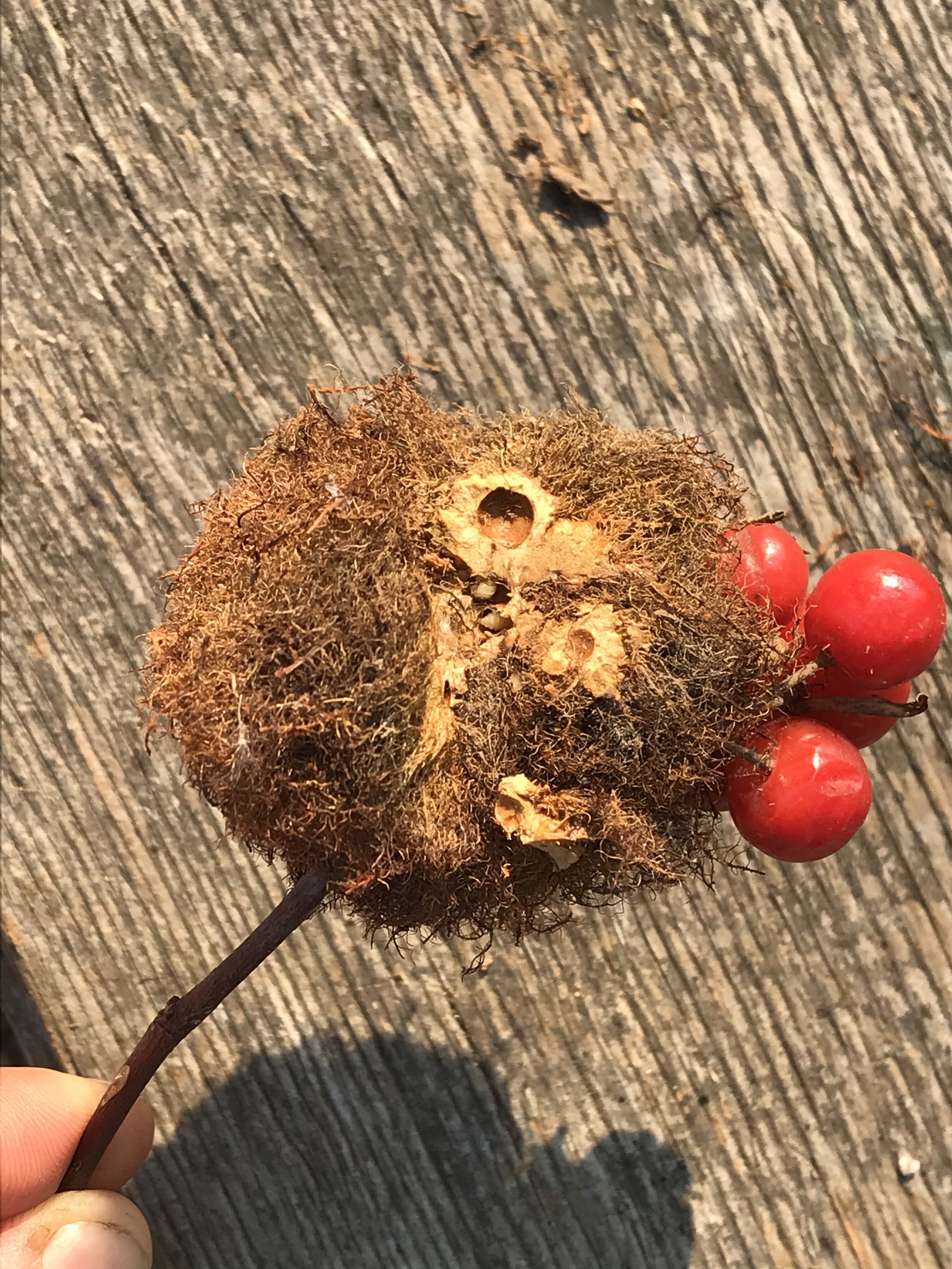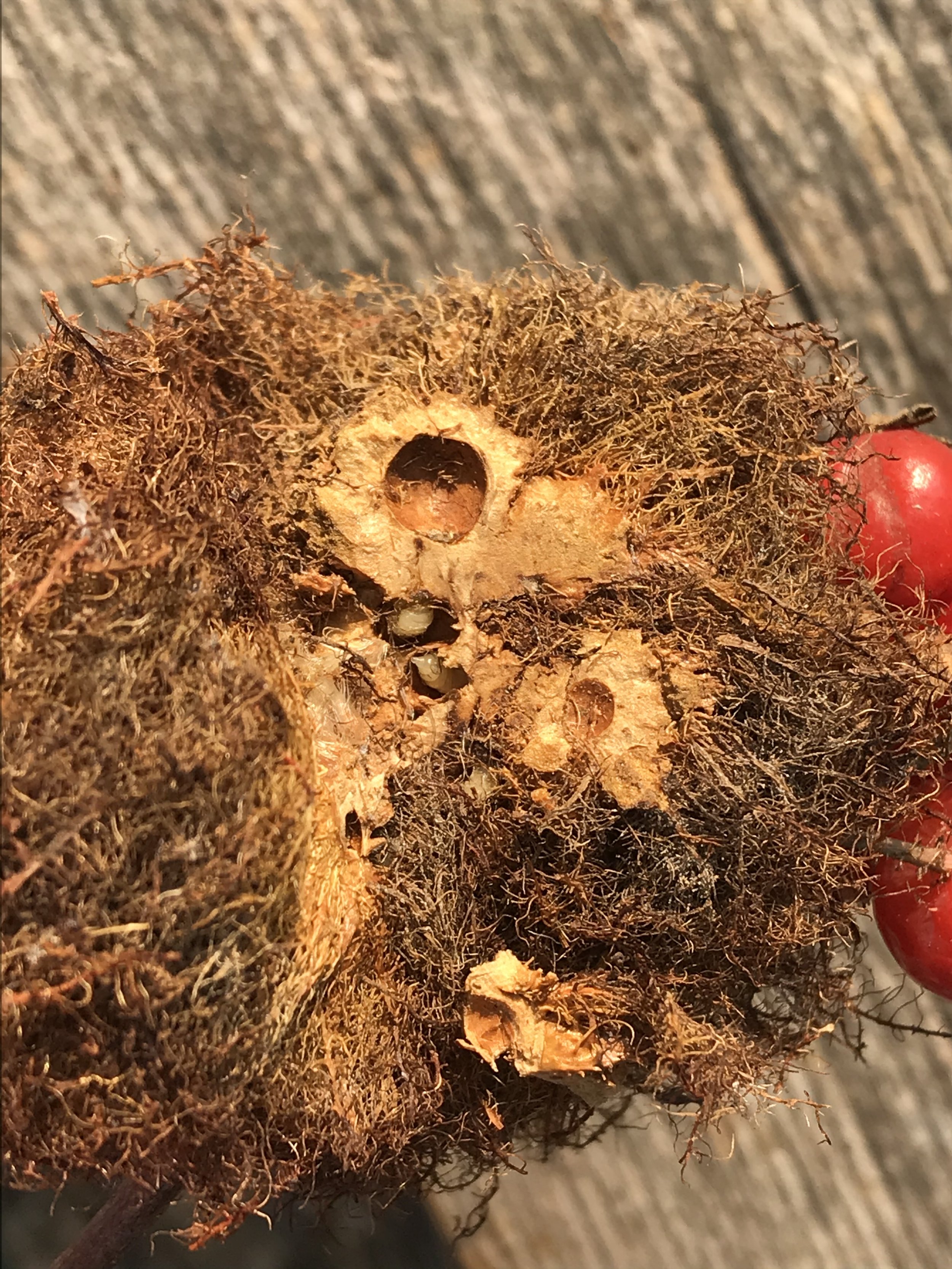By Alex Kaiser
Sign up to join a guided work party here! No experience necessary and all are welcome.
The session started off with a short talk about gall wasps, and we looked at a gall on a rose stem caused by a rose gall wasp. We were even able to see the larva living inside!
We looked at a gall on a rose stem caused by a rose gall wasp.
These sort of highly specialized insects are really interesting to observe, and they show the complexity of some insect and plant relationships.
Check out the larva living inside.
Alex brought in some cuttings of a great plant called Tradescantia pallida — commonly known as “purple heart” — to share with the group, and he did a small demonstration on how to prepare cuttings for rooting in water.
We harvested a great amount of kale, Swiss chard, lettuce and tomatoes today, with some bonus bitter melon, lemongrass, feverfew and other herbs!
Today we set up a basin of cold water to dunk all of our leafy vegetables in. With the poor air quality and dusty conditions, it’s a good step to rinse all of the leaves, and the cold water greatly increases the shelf life of leafy greens.
We had a great harvest of leafy greens!
All of our bundles of greens looked great at the end of the day, and every single one was taken home by the volunteers! They will also last longer in people’s fridges after they take them home, so we agreed that adding this step was important for making sure we get enjoy the produce we are growing and feel good giving it to others!
Working in the garden 🌸
Feverfew is often confused with chamomile and is grown as an attractive self-seeding and fragrant wildflower. It’s useful as a source of pollen and nectar and still has the fragrant quality of chamomile or chrysanthemum, but the flavour is more bitter when brewed as a tea and has been used traditionally as a medicine in Europe.
Feverfew is often confused with chamomile.
Harvesting feverfew!















